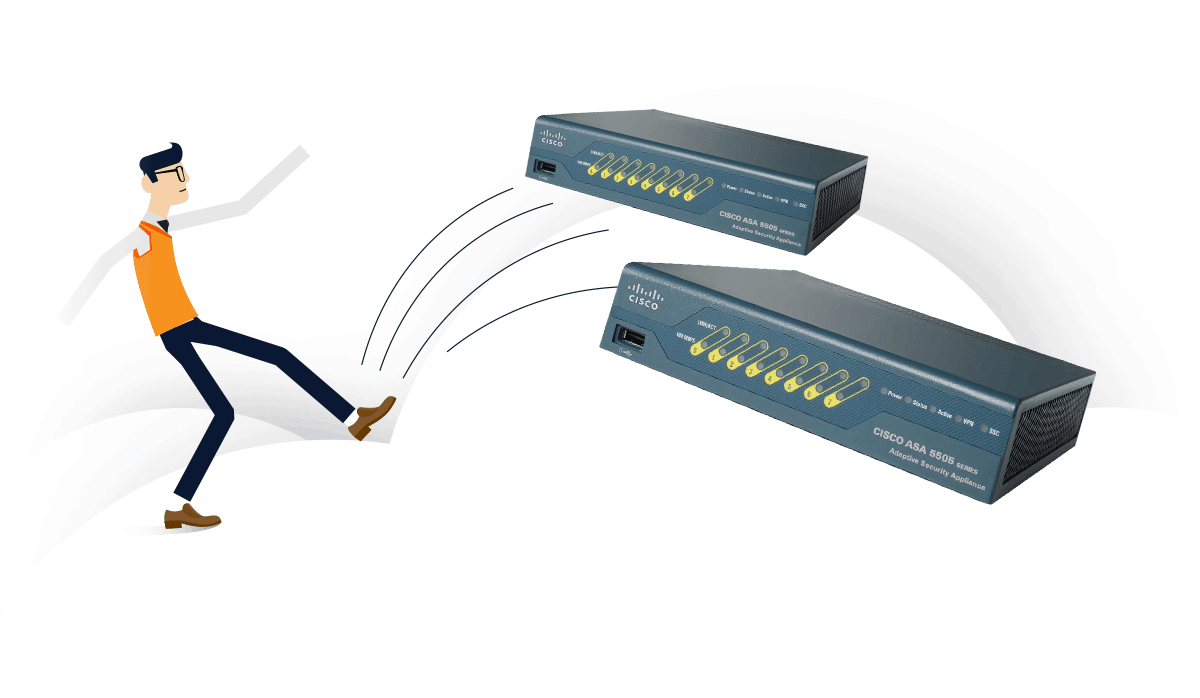The severe vulnerability Cisco reported in its Cisco Adaptive Security Appliance (ASA) Software has generated widespread outcry and frustration from IT managers across the industry.
While Cato generally does not generally discusses security bugs in other vendor products, this vulnerability demonstrates why the appliance-centric way of delivering network security is all but obsolete. When a vulnerability ranks “critical,”admins everywhere must go into a fire drill to patch a huge number of devices or risk a breach. This is an enormous waste of resources and a perpetual risk for organizations, particularly those who can’t quickly respond.
The advisory, CVE-2018-0101, explains how an unauthenticated, remote attacker can cause a reload of an affected system or remotely execute code. The vulnerability occurs in the Secure Sockets Layer (SSL) VPN functionality of the Cisco Adaptive Security Appliance (ASA) Software. The vulnerability is considered critical and organizations should take immediate action. You can read the Cisco advisory here.
Cisco ASA is a unified threat management (UTM) platform designed to protect the network perimeter. According to Shodan, a search engine for finding specific types of internet-connected devices, approximately 120,000 ASAs have the WebVPN software enabled, the vulnerable component pertinent to the advisory.

The release once again underscores the problems inherent in security appliances. As we’ve discussed before, UTMs, and appliances in general, suffer from numerous problems. For one, UTMs often lack the capacity power to run all features simultaneously. They also require ongoing care and maintenance, including configuration, software updates and upgrades, patches and troubleshooting.
CVE-2018-0101 is just the latest example. The advisory has left IT pros scrambling — and frustrated: “hey @Cisco thanks for NOT providing the fix for CVE-2018-0101 to customers without a current SmartNet contract. I’m going to advise all my clients with an ASA to immediately switch to a product of another vendor witch does leave it’s customers sit in the rain with open vulns,” tweets Jenny

Beattie a self-described, network engineer writes “CVE-2018-0101 is kicking my ass #patch #cisco #security Only 153 “critical” devices to go…”

To make matters worse, there can be significant time between issuing the patch and publishing the advisory. “Eighty days is the amount of time that passed between the earliest software version that fixed the vulnerability being released, and the advisory being published. Eighty Days!” writes Colin Edwards,
“….I’m not sure that customers should be willing to accept that an advisory like this can be withheld for eighty days after some fixes are already available. Eighty days is a long time, and it’s a particularly long time for a vulnerability with a CVSS Score of 10 that affects devices that are usually directly connected to the internet.”

Vulnerabilities occured in the past, and will occur in the future. The fire drill imposed on security admins everywhere can be avoided. How? Cato’s answer is simple: drop the box. Cato provides Firewall as a Service by converging the full range of network security capabilities into a cloud-based service.
IT professionals no longer have to race to apply new security patches. Instead, Cato Research Labs keeps security current, updating the service, if necessary, once for all customers. And with security in the cloud, organizations can harness cloud elasticity to scale security features according to their needs without having to compromise due to appliance location or capacity constraints. A cloud-based network security stack also provides better visibility and inspection of traffic as well as unified policy management.
To learn more about firewall-as-a-service visit here.










